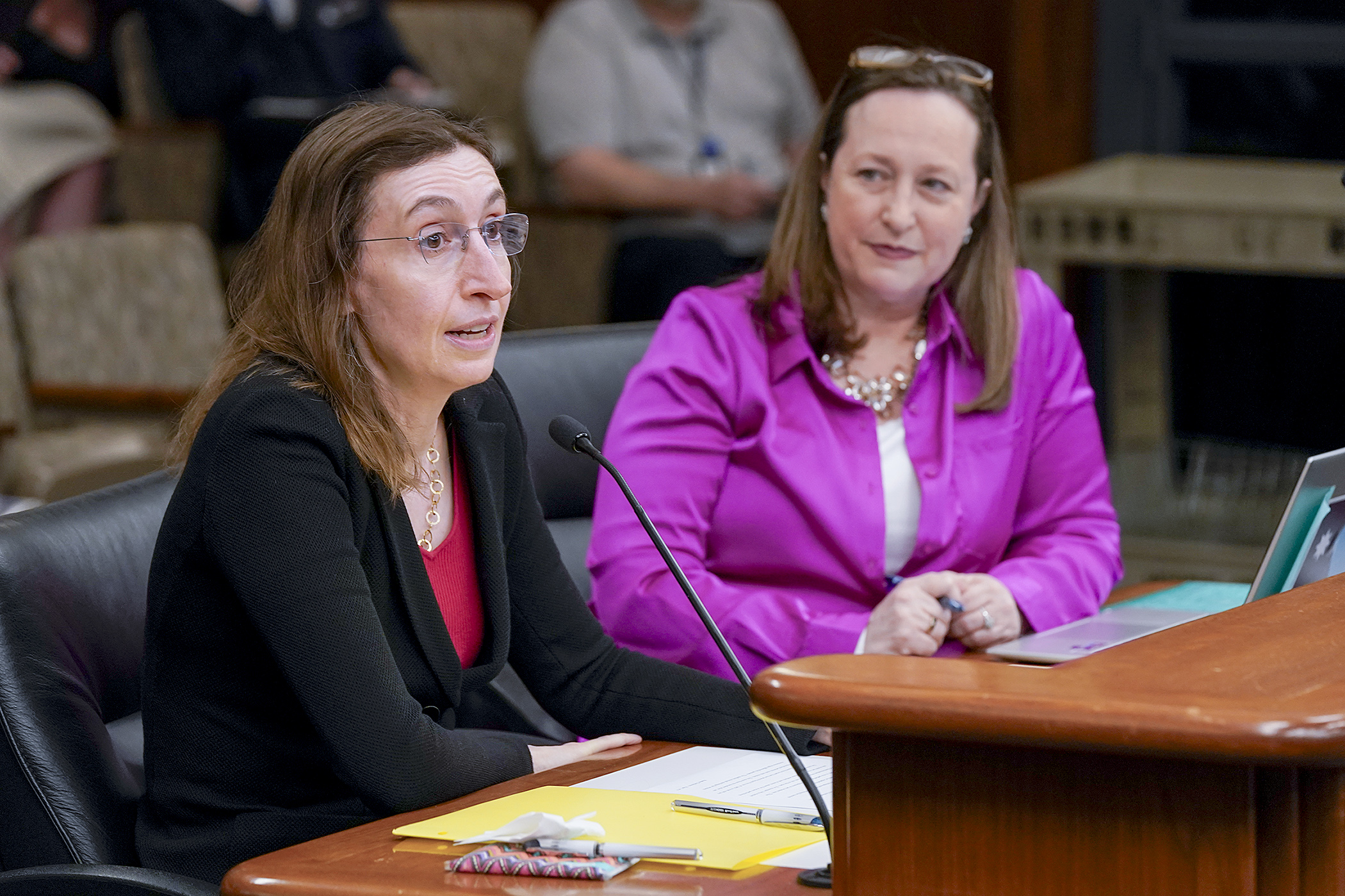Legislation calls for state’s larger employers to include salary ranges in job postings

While employed by a local technology company, Rep. Kristin Bahner (DFL-Maple Grove) discovered her salary was about $20,000 a year less than a male co-worker who had less responsibility.
“My story is one example,” she told the House Labor and Industry Finance and Policy Committee Thursday. “But it is not uncommon to find that these stories are widespread, that they are commonplace.”
She sponsors HF3587 to help shrink the wage gap between working women, minorities and men in Minnesota. It would require employers with more than 30 employees to disclose salary ranges, benefits and compensation in job postings.
It was laid over by the committee for possible inclusion in a future bill.
“Pay transparency promotes pay equity,” said Jill Hasday, a law professor at the University of Minnesota. “Pay secrecy makes it easier for employers to get away with paying different salaries for the same work.”
Since 2020, the Minnesota Council of Nonprofits and two other nonprofits with “prominent” job boards have required a salary range on each posting.
“To date, we have received little negative feedback regarding our job board pay requirement and it is now the norm in the Minnesota nonprofit industry, which makes up 14% of Minnesota’s total workforce,” wrote Public Policy Director Marie Ellis and Public Policy Manager Bailey Sutter.
There have been a lot of studies to figure out how to solve the pay gap problem, but two solutions rise to the top, Bahner said. “The first is prohibiting previous salary information, which we passed last year. And the second is pay transparency — specifically pay ranges and disclosure of benefits.”
Minnesota’s Equal Pay for Equal Work Law is already on the books and prohibits employers from paying women less than men, said Rep. Brian Daniels (R-Faribault).
“Why we are going to have another bill putting more mandates on the salary ranges … when there’s a law already on the books for equal pay for equal work?”
“The benefits of moving to a more transparent model are significantly moving the needle in making sure that those laws that are on the books are actually living up to their promise,” Bahner said.
Since pay range can differ greatly depending on qualifications and experience, Rep. Isaac Schultz (R-Elmdale Township) questioned how an employer would arrive at a salary range to post.
“You can literally Google average salary ranges for someone in a specific position or specific area that gives you a pretty solid idea of where you might be,” Bahner responded. “And to be candid, if employers are not doing that they probably should be to be competitive in the workplace.”
Pay transparency can benefit both employees and employers by increasing productivity, giving employees better negotiating power, higher job satisfaction and employee retention.
“But the real bottom line is that pay transparency produces 70% more applicants, 66% more qualified candidates … while reducing the time spent on recruiting and hiring,” Bahner said.
Related Articles
Search Session Daily
Advanced Search OptionsPriority Dailies
Ways and Means Committee OKs proposed $512 million supplemental budget on party-line vote
By Mike Cook Meeting more needs or fiscal irresponsibility is one way to sum up the differences among the two parties on a supplemental spending package a year after a $72 billion state budg...
Meeting more needs or fiscal irresponsibility is one way to sum up the differences among the two parties on a supplemental spending package a year after a $72 billion state budg...
Minnesota’s projected budget surplus balloons to $3.7 billion, but fiscal pressure still looms
By Rob Hubbard Just as Minnesota has experienced a warmer winter than usual, so has the state’s budget outlook warmed over the past few months.
On Thursday, Minnesota Management and Budget...
Just as Minnesota has experienced a warmer winter than usual, so has the state’s budget outlook warmed over the past few months.
On Thursday, Minnesota Management and Budget...